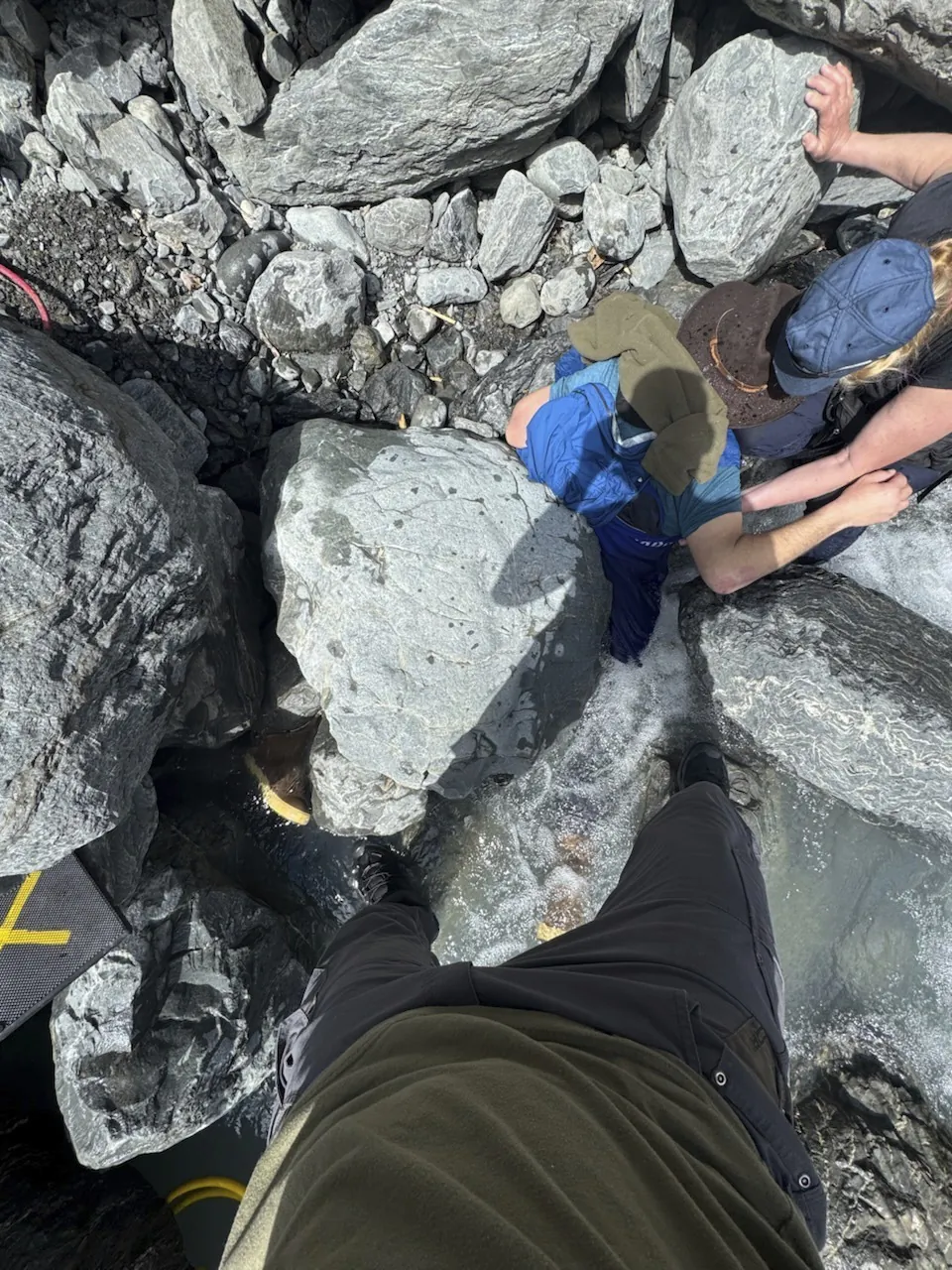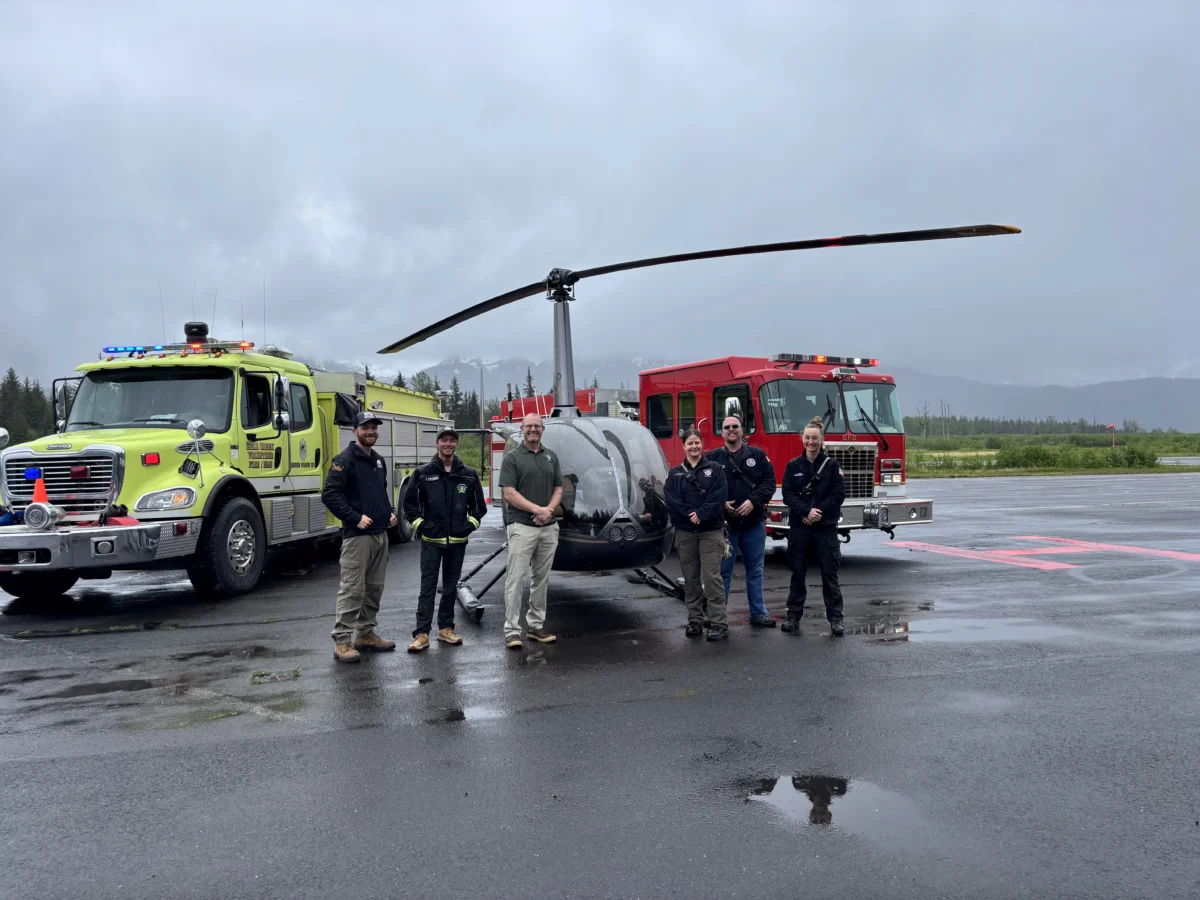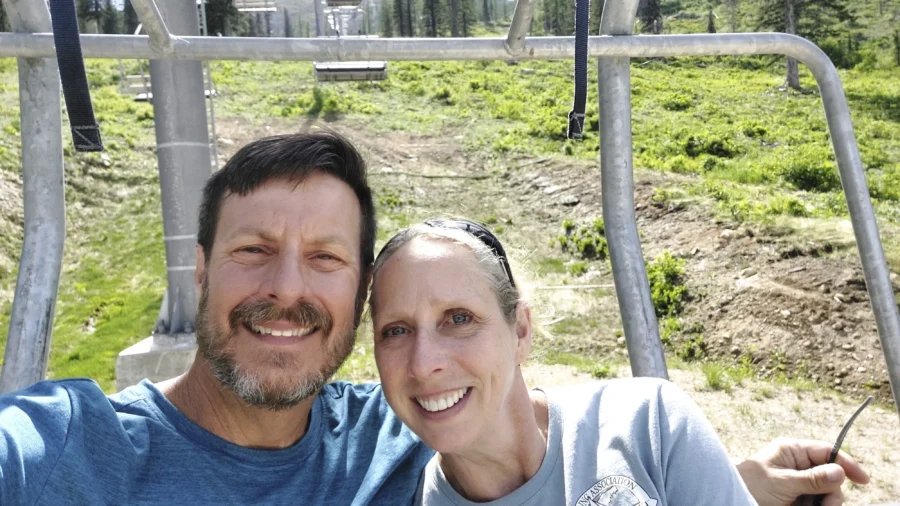“It felt really good to be able to help somebody, that could have gone a whole different way.”
These were the words told to NTD by Sam Paperman, an adventure tour guide who didn’t start his day planning to help rescue a man from underneath a 700-pound boulder in the remote Alaskan wilderness.
The lucky individual who survived the ordeal is Kell Morris, age 61, of Alaska. Morris and his wife, Jo Roop, were blazing a trail when loose boulders caused a slide that swept Morris down into an icy glacial stream that he estimates must have been almost two stories below him. The fallen hiker was pinned, face down in the frigid water, by a huge rock.
“As the slide started, it started very quickly and I was on my feet–for a few feet–and then when I lost my footing and fell down,” Morris said on May 29.
“Then it’s just kind of a blur, it happened very fast. And I was a good 20 feet, I would say, above the river, above the creek. And … just tumbled and ended up face down in the water and then immediately felt the rock hit my back.”
Morris described that his left leg and hip seemed to have been pressed into a hollow in the streambed, and he did not know how long he could hold out. “There was a big–very hard–pinch point right in the middle of my hamstring … where most of the pressure was. But there was pressure all along my left leg and on my left side of my back.”

Kell Morris, upper right in a brown hat, trapped under a 700 pound rock near Seward, Alaska, on May 24, 2025. Jason Harrington/Seward Fire Department via AP
Video footage and photos from the incident show the milky, fast-moving water of the frigid glacial stream where Morris was all but immobilized, able to hold his head up out of the water, at first. Later, his wife Roop held his face out of the water. A retired Alaska state police officer, Roop tried to free her husband from the boulder pressing him down, but realized she would need to call for help.
Quick Thinking
The 911 call was intercepted by not only the fire department, but by Paperman, a young off-duty fireman and trained EMT who has a day job working for Seward Helicopter Tours and Turning Heads Kennels, twin companies that bring glacier-top dog sledding experiences to tourists. Paperman told NTD he knew he needed to act fast when he realized the fire department was planning to go in to help Morris using four-wheel all-terrain vehicles (ATVs).
“I had hiked that valley before and I knew that 4-wheelers and hiking out of that place would have been extremely hard. I got the call and went straight to the airport,” Paperman said.
The operations manager for Seward Helicopter Tours, Elise Cevetello, explained to NTD that Paperman diverted the company’s helicopter–and pilot, Neo Martinson–to airlift the firemen rather than have them navigate the terrain with ATVs. Paperman had worked with Martinson before. “I knew this pilot pretty well, two years,” Paperman said, but he said that they had never practiced this kind of rescue operation together and that it actually wasn’t so easy at first.
Meanwhile, Morris and Roop could do nothing but wait. Morris described submersion in the glacial stream as “cold. I knew I couldn’t last very long in that water. And I’m thinking, ‘All day into the night before anybody can get to us–We need to hurry.’”
Fortunately, it wasn’t “all day and into the night.” The borrowed rescue helicopter and its quickly assembled team arrived within only a few hours, which may have been just in time.
Paperman said, “I would say…when I showed up he was already pretty hypothermic.” He said his reasoning for getting involved in his off hours had so much to do with “my experience here in Alaska,” where he had lived his whole life. “I know the terrain. I know how crucial it is. He was in a glacier-fed river for over an hour.”

The creek near Seward, Alaska, where Kell Morris was trapped under a 700 pound rock, on May 24, 2025. Jason Harrington/Seward Fire Department via AP
As Morris described it, things had reached a point where “I was doubtful that there was going to be a good outcome.” But then, the first rescue team arrived, piloted by Martinson. Paperman said, “By the time we got him out from underneath the rock and started warming him up we could tell pretty rapidly that he was improving.”
Morris said, “Towards the end, especially as I was starting to get weaker and weaker, I had a feeling: You know, these guys were so professional, they knew exactly what they were doing. The confidence in their voices and in what they were doing: I knew ‘I’m fine, now.’”
Paperman said they were able to stabilize Morris and prepare him for “‘vac” by the pararescue team, or PJs, who belonged to the Air National Guard or the Air Force: “We put him in a splint and then the Air Force PJs … came and lifted him out.” Paperman expressed that he felt the quick arrival of the EMTs from the fire department helped provide the critical moments that Morris needed for a good outcome.
Fire Chief Clinton Crites later said, “I think if we hadn’t had that private helicopter assist us, it would have taken us at least another 45 minutes to get to him, and I’m not sure he had that much time.”

A few members of Kell Morris’ rescue team from Seward Fire Department and Seward Helicopter Tours. Rescuers include, from left, pilot Neo Martinson and Sam Paperman. Fire department members from right include Kate McCoy and Jeremy Rogers. Courtesy of Seward Helicopter Tours via NTD
Video taken at the scene by Jason Harrington of the Seward Fire Department shows the rapid ascent of Morris on his splint, secured by a pararescue technician as the two of them are pulled skyward on a hoist cable by the team in the second rescue helicopter, belonging to the Air Force or Air National Guard. This was one of the final frames in the video that was introduced with the picture of Morris pinned in the stream.
Morris reflected: “You see pictures of what it was! And, you know, in Alaska people don’t usually survive that. So, I was very lucky. God was looking out for me. He put me in, you know—a little wake-up call to stop doing that at my age, but at the same time, took care of me!”
Paperman observed, “He recovered insanely fast, from what I saw when I first showed up. It’s kind of insane: Two days later he went into work!”
Morris’ rescue is not only a heart-warming story; the successful rescue demonstrates how the community of Seward quickly came together and the results of the fast communication between those who train to help and lead others. And, of course, it’s a chance to reflect on those “little wake up call(s)”, as Morris put it, and where they may come from.
The Associated Press contributed to this report.

